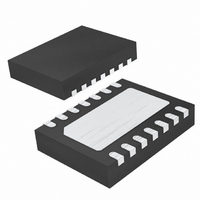LTC4263IDE-1#TRPBF Linear Technology, LTC4263IDE-1#TRPBF Datasheet - Page 10

LTC4263IDE-1#TRPBF
Manufacturer Part Number
LTC4263IDE-1#TRPBF
Description
IC IEEE 803.2AF CNTRLR 14-DFN
Manufacturer
Linear Technology
Type
Power Over Ethernet (PoE)r
Datasheet
1.LTC4263CDE-1PBF.pdf
(20 pages)
Specifications of LTC4263IDE-1#TRPBF
Applications
Power Interface Switch for Power Over Ethernet (PoE) Devices
Voltage - Supply
48V
Operating Temperature
-40°C ~ 85°C
Mounting Type
Surface Mount
Package / Case
14-DFN
Current - Supply
1mA
Interface
IEEE 802.3af
Controller Type
Power Sourcing Equipment Controller (PSE)
Lead Free Status / RoHS Status
Lead free / RoHS Compliant
Available stocks
Company
Part Number
Manufacturer
Quantity
Price
APPLICATIONS INFORMATION
LTC4263-1
POE OVERVIEW
Over the years, twisted-pair Ethernet has become the most
commonly used method for local area networking. The
IEEE 802.3 group, the originator of the Ethernet standard,
has defi ned an extension to the standard, IEEE 802.3af,
which allows DC power to be delivered simultaneously
over the same cable used for data communication. This
has enabled a whole new class of Ethernet devices, in-
cluding IP telephones, wireless access points, and PDA
charging stations which do not require additional AC
wiring or external power transformers, a.k.a. “wall warts.”
These small data devices can now be powered directly from
their Ethernet connection. Sophisticated detection and
power monitoring techniques prevent damage to legacy
data-only devices while still supplying power to newer,
Ethernet-powered devices over the twisted-pair cable.
The device that supplies power is called the Power Sourc-
ing Equipment (PSE). A device that draws power from the
wire is called a Powered Device (PD). A PSE is typically an
Ethernet switch, router, hub, or other network switching
equipment that is commonly found in the wiring closets
where cables converge. PDs can take many forms. Digital
IP telephones, wireless network access points, PDA or
notebook computer docking stations, cell phone chargers,
and HVAC thermostats are examples of devices that can
draw power from the network.
10
56V
+
–
0.1μF
0.1μF
V
V
LTC4263-1
SS
DD5
V
DD48
OUT
PSE
0.1μF
SMAJ58A
58V
Rx
Tx
Figure 1. 2-Pair High Power PoE System Diagram
4
5
1
2
3
6
7
6
RJ45
DATA PAIR
DATA PAIR
SPARE PAIR
SPARE PAIR
CABLE
CAT 5
RJ45
7
6
4
5
1
2
3
6
A PSE is required to provide 44V to 57V DC between
either the signal pairs or the spare pairs as shown in
Figure 1. The power is applied as a voltage between two
of the pairs, typically by powering the center taps of the
isolation transformers used to couple the differential
data signals to the wire. Since Ethernet data is trans-
former coupled at both ends and is sent differentially,
a voltage difference between the transmit pairs and the
receive pairs does not affect the data. A 10Base-T/
100Base-TX Ethernet connection only uses two of the four
pairs in the cable. The unused or spare pairs can option-
ally be powered directly, as shown in Figure 1, without
affecting the data. 1000Base-T uses all four pairs and
power must be connected to the transformer center taps
if compatibility with 1000Base-T is required.
The LTC4263-1 provides a complete high power PSE
solution for powering newer power hungry PDs such as
dual-radio wireless access points, security cameras and
RFID readers. With proper system design, proprietary high
power PoE solutions using the LTC4263-1 can deliver 25W
(min) to a high power 2-pair PD at the end of a 100 meter
CAT5 cable and 50W (min) using a 4-pair solution.
The LTC4263-1 provides a high power PSE solution while
simultaneously being compatible with existing IEEE 802.3af
systems. By maintaining a compliant detection protocol,
the LTC4263-1 insures legacy data-only devices are not
Rx
Tx
1N4002
1N4002
4
4
0.1μF
PD
SMAJ58A
58V
R
–48V
CLASS
LTC4264-BASED
IN
PD/SWITCHER
GND
–48V
OUT
OUT
C
IN
≥ 5mF
V
42631 F01
42631fa
OUT
+
–














